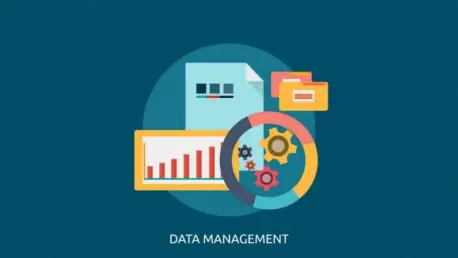In today’s rapidly evolving AI landscape, organizations face a myriad of challenges related to data governance. Vijay Raina, an expert in enterprise SaaS technology and software design, sheds light on critical issues such as the importance of data governance, the consequences of improper data handling, and effective measures organizations can adopt to mitigate these risks.
What are the consequences organizations face when they train AI models on unlicensed or misclassified data?
Organizations using unlicensed or misclassified data for AI model training can incur several serious consequences. These range from legal battles over intellectual property rights to multimillion-dollar copyright lawsuits. Beyond the financial penalties, there’s the risk of forced model takedowns, which can disrupt business operations. Furthermore, ingesting sensitive data without authorization breaches compliance protocols, potentially leading to data leaks that can harm a company’s reputation and trust with its customers.
Why is strong data governance important for AI systems? How can it help avoid legal and reputational risks?
Strong data governance forms the backbone of secure and compliant AI systems. By ensuring that data sourcing and usage rights are clearly defined and adhered to, organizations can avoid legal pitfalls and safeguard their reputation. With proper governance, data integrity and accuracy are maintained, reducing the risk of feeding erroneous data into AI models. This proactive approach not only shields companies from potential fines and lawsuits but also fosters customer trust and maintains a competitive edge in the market.
How can organizations ensure proper control over data sourcing and usage rights for AI training?
To ensure proper control over data sourcing and usage rights, organizations should implement comprehensive data tracking and audit systems. Developing clear policies for data acquisition and verifying the legitimacy of data sources is crucial. Additionally, maintaining detailed records of permissions and consent agreements helps in establishing a transparent framework. Investing in platforms that integrate data governance tools can streamline these processes, providing a seamless path to compliance while maximizing data utility for AI training.
What rights and recourses do data owners have if their data is used for AI training without consent?
Data owners have the right to take action against unauthorized use of their data, supported by frameworks such as GDPR, CCPA, and CPRA. These regulations provide avenues for contesting unauthorized data use, demanding transparency, and enforcing data takedowns. By leveraging these legal pathways, data owners can hold organizations accountable for misuse and ensure their data is protected according to prescribed standards and obligations.
How do laws like GDPR, CCPA, and CPRA support data owners in contesting unauthorized data use?
Regulations like GDPR, CCPA, and CPRA empower data owners with rights to transparency, consent, and control over their personal information. These laws establish strict compliance requirements for organizations, mandating clear data use policies and offering individuals the ability to request disclosures about data handling practices. Failure to comply can result in significant penalties, thereby motivating organizations to prioritize data governance and protect data owners’ rights.
Can you give examples of real-world penalties organizations have faced due to improper data handling?
A notable example is the $1.3 billion fine imposed on Meta by Ireland’s Data Protection Commission for breaching GDPR requirements related to user data transfers. Such penalties underscore the financial and reputational damages organizations face due to improper data handling. These cases highlight the necessity for stringent data governance to avert similar risks and underscore the business imperative to adhere to regulatory standards.
What role do permissioning and consent management play in preventing data-related issues for AI training?
Permissioning and consent management are crucial in preventing data-related issues by ensuring that data usage aligns with granted rights and agreements. These mechanisms serve as the foundation for ethical data practices by managing consent dynamically and adjusting permissions based on regulatory changes or consumer preferences. They help establish trust and transparency, reducing the risk of unauthorized data use and enhancing compliance with legal requirements.
How effective are defenses like watermarking, Nightshade, or honeypots against unauthorized data scrapers?
While theoretically promising, defenses like watermarking, Nightshade, and honeypots have limited effectiveness at scale. Many scrapers can easily bypass these methods, and data poisoning introduces its set of risks. Additionally, models can be trained to ignore watermarks, making these strategies unreliable. Therefore, organizations should focus on improving their data governance frameworks instead of solely relying on these defensive tactics.
What steps can organizations take to verify the safety of external data for model training?
When using external data, thorough verification procedures are essential. Organizations should ensure full visibility into data flows and document authorizations and permissions for all data transactions. Legal guarantees should be sought from vendors regarding data usage rights, including appropriate clauses for monetary damages if terms are breached. By instituting these checks, organizations can minimize compliance risks and foster a secure data environment.
What should organizations expect from third-party vendors in terms of legal guarantees regarding data usage?
Organizations should expect third-party vendors to provide comprehensive legal guarantees concerning data usage. These guarantees include assurances about data rights, compliance with legal frameworks, and accountability clauses. Vendors should be transparent about their data practices and willing to cover any potential liabilities that arise from non-compliance. Establishing clear contractual terms upfront can mitigate risks and ensure alignment with regulatory standards.
What are best practices for classifying and tracking data to prevent the leakage of sensitive information or PII?
Best practices for data management include discovering and classifying all data assets, applying stringent access controls, and implementing data sanitization protocols. Organizations should deploy real-time monitoring systems to oversee data flows and interactions, which helps prevent the inadvertent entry of sensitive information into AI pipelines. By embracing these practices, companies can secure data environments and maintain compliance standards effectively.
Why is real-time monitoring of data flows and AI interactions crucial in maintaining data security and compliance?
Real-time monitoring is vital for promptly identifying and mitigating potential data breaches or compliance violations. It provides continuous visibility into how data is accessed and used, enabling organizations to act swiftly against unauthorized activities. This proactive approach reduces the risk of data leaks and ensures that AI systems operate within the bounds of legal and ethical standards.
How can organizations prevent sensitive data from entering AI pipelines unintentionally?
Organizations can prevent unintentional entry of sensitive data into AI pipelines by implementing robust data classification and sanitization protocols. Enforcing strict access controls and regularly auditing data flows are essential steps. Educating employees about data privacy policies and integrating automated tools that flag unauthorized data use can further bolster defenses against data breaches.
What is the significance of having full visibility into data flows, authorizations, and permissions for AI model training?
Full visibility into data flows and permissions ensures that organizations can track and manage data more effectively, preventing unauthorized usage and enhancing compliance. This transparency allows for better decision-making and risk management, as firms can quickly identify and address discrepancies in data handling. It empowers organizations to maintain a clear accountability framework, reducing exposure to legal liabilities and reputational damage.
Do you have any advice for our readers?
Embrace a culture of data governance and continuous improvement. By establishing clear data management practices, investing in advanced tools, and fostering transparency, organizations can not only ensure compliance but also build robust AI systems that drive innovation and trust. Remember, in today’s data-driven landscape, proactive governance is not just a protective measure but a strategic advantage.









